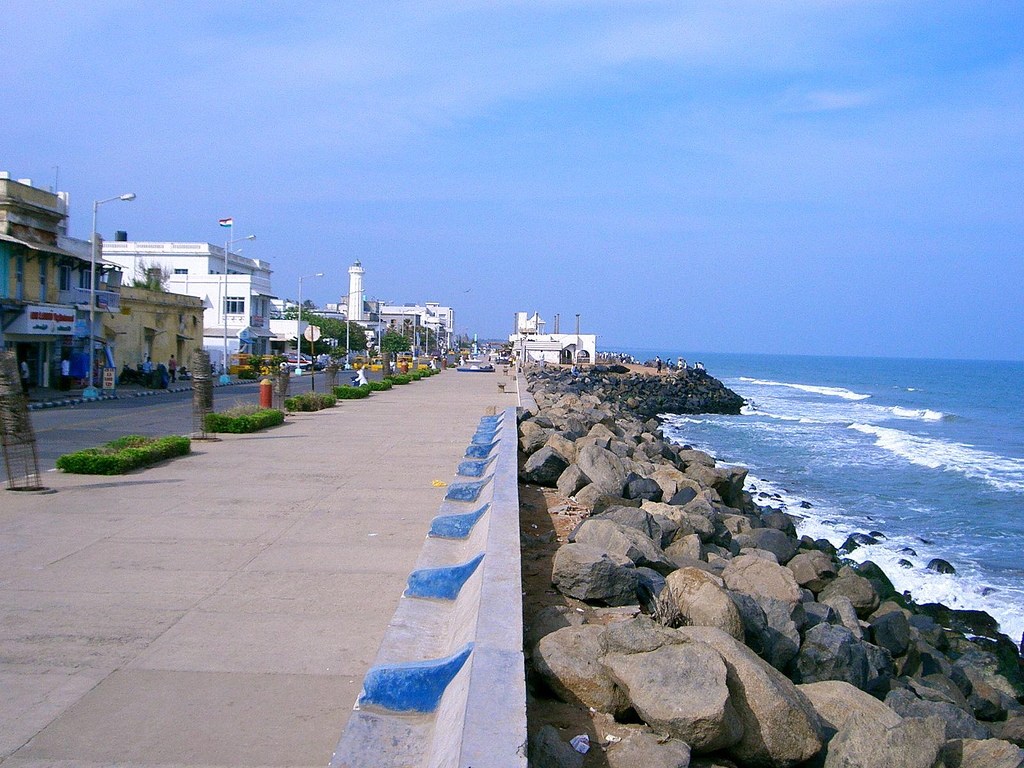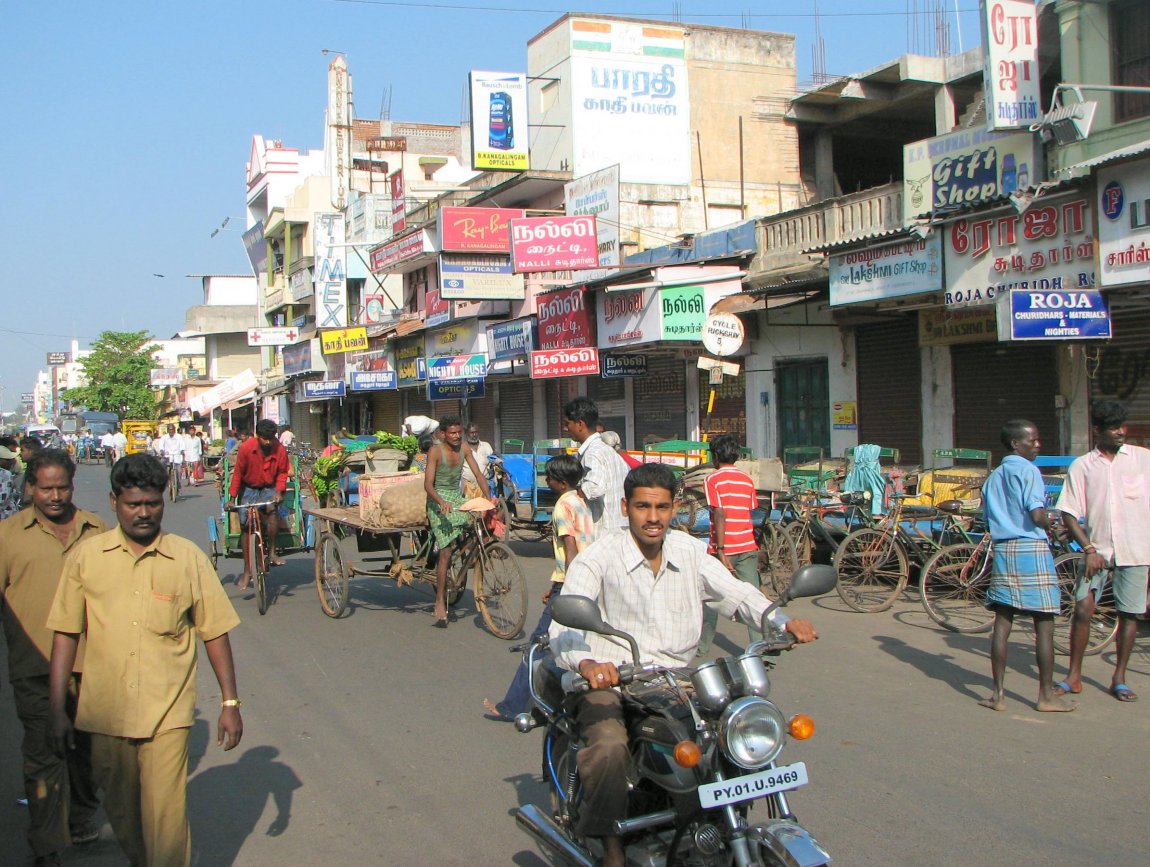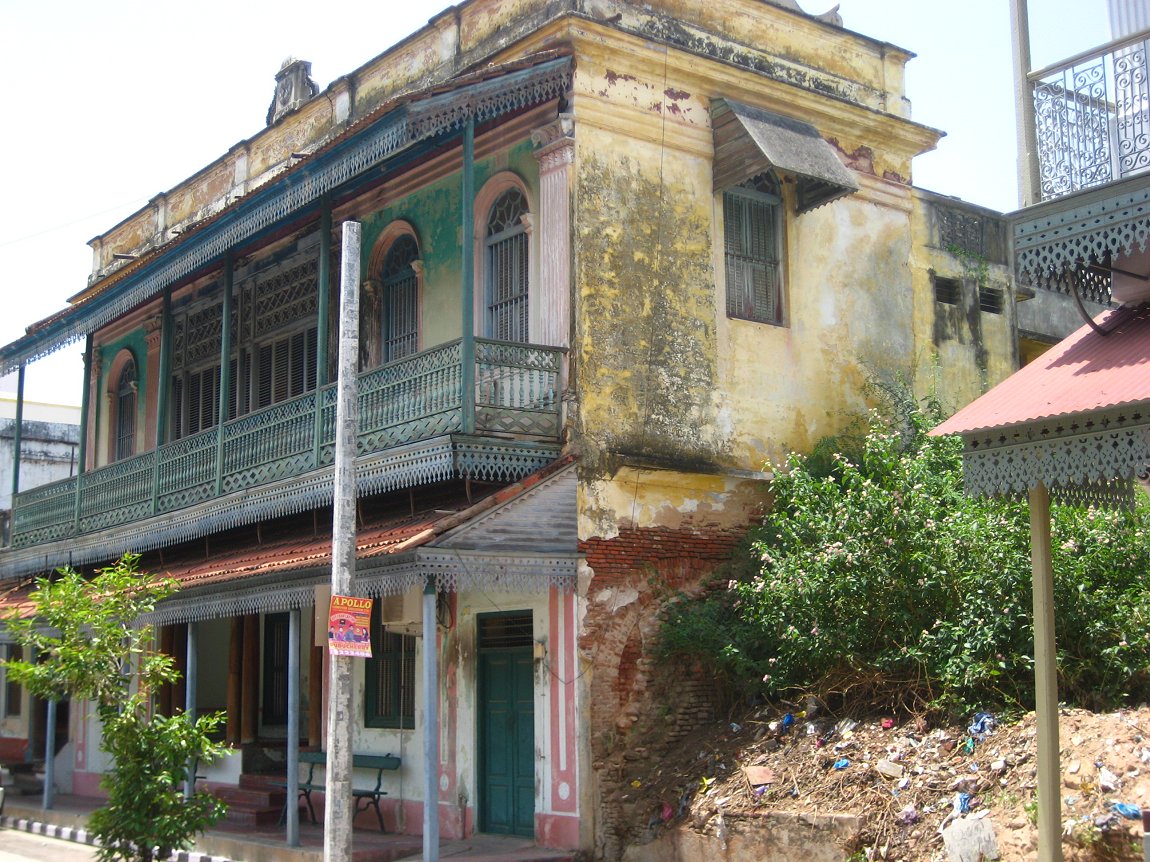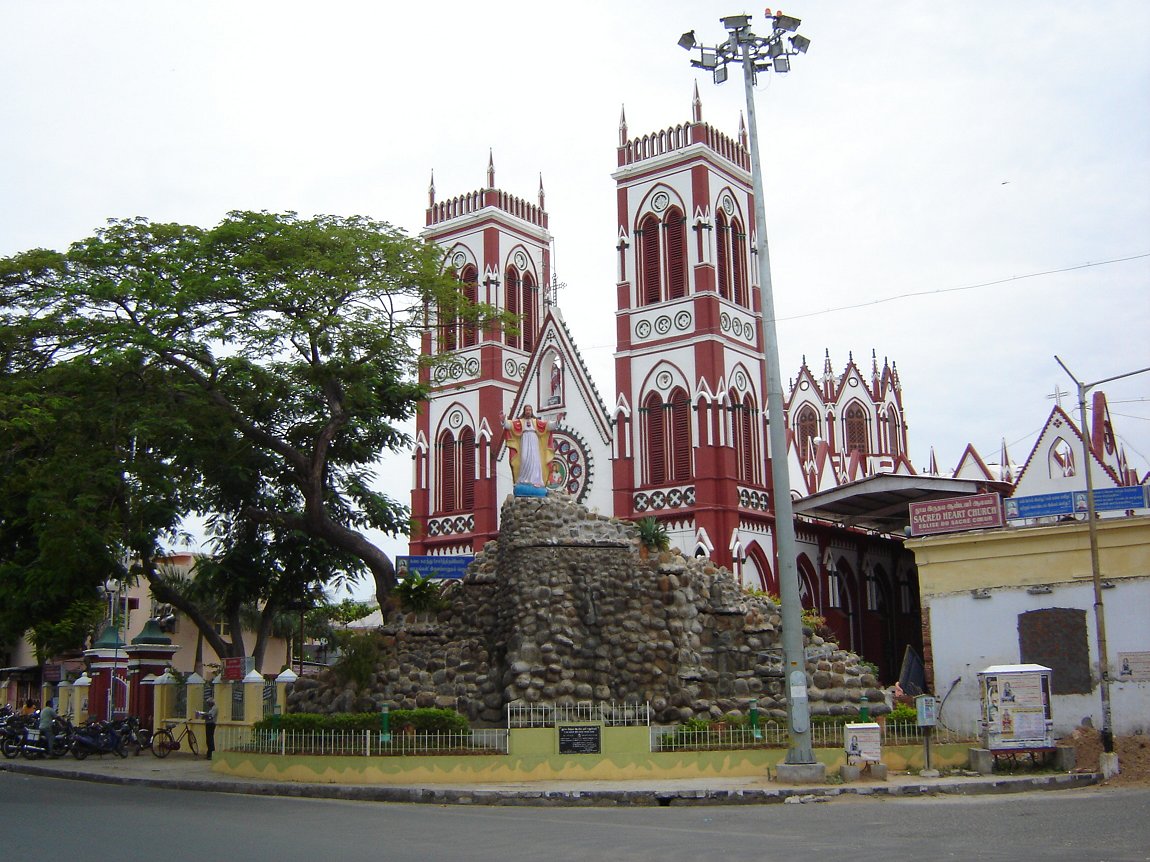 Beach promenade in Puducherry
Beach promenade in PuducherrySource: https://commons.wikimedia.org/wiki/File:Puducherry_beach.jpg
Author: NDSRAM

Author: NDSRAM

Puducherry (formerly Pondicherry, Tamil: புதுச்சேரி, French: Pondichéry, map) is a Union Territory of India. It covers a total area of 492 sq km (190 sq mi) and has a population of 1.2 million people.
The capital and largest city is also called Puducherry. Built by the French - and also for a few decades the Dutch - it bears strong influences from these two former colonial administrators, particularly in its boulevards, the grid layout, the elegant French-style colonial buildings which stand out against the "Indian backdrop". Indeed the French loved the city so much that they called it La Côte d'Azur de l'Est (French Riviera of the East).
Places of Interest in Puducherry
- Auroville
- Aurobindo Ashram
- Chunnambar Boat House
- Government Museum
- Pondicherry Beach
- Pondicherry Botanical Garden
- Pondicherry Museum
- Manakular Vinayagar Temple
- Sithanandhar Temple
- Vannia Perumal Temple
 Puducherry, India
Puducherry, IndiaSource: https://commons.wikimedia.org/wiki/File:Pondich%C3%A9ry_01.jpg
Author: Bernard Gagnon

Author: Bernard Gagnon

Formerly a French colony, the union territory of Puducherry comprises four non-contiguous parts namely Puducherry, Karaikal, Yanam and Mahe. The four are scattered across the southern part of India. The main portion, Puducherry (293 sq km), is an enclave of Tamil Nadu, as is Karaikal (160 sq km) to its south. Yanam (30 sq km) is an enclave of Andhra Pradesh while Mahé (9 sq km), facing the Arabian Sea to the west, is an enclave of Kerala.
Puducherry was known as Pondicherry until September 2006, when it was renamed to bring it closer to its original name in Tamil, which means "new village". The area has been settled as early as the 1st century AD. During the 4th century, it was part of the Pallava Kingdom. In the subsequent centuries various kingdoms rose and declined, each having a hand at controlling Puducherry, among them the Chola kingdom in the 10th century, the Pandya kingdom in the 13th, the Vijayanagar Empire from the 14th century until 1638, when Puducherry came under the rule of the Sultan of Bijapur.
 House exhibiting Tamil and French architectural influences in Puducherry
House exhibiting Tamil and French architectural influences in PuducherrySource: https://commons.wikimedia.org/wiki/File:Puducherry_Tamil_house_2.jpg
Author: Melanie-m

Author: Melanie-m

Pondicherry, as it was known during colonial times, was the base for the French East India Company, which set up its trading center there as early as 1674. It was a prize contested by the various European powers. The Dutch captured it in 1693 but had to return it to the French in 1699, at the Treaty of Ryswick. The French then added Mahé (1720), Yanam (1731) and Karaikal (1738) to its control. Meanwhile Pondicherry was captured by the British in 1761, but was again returned to the French, under the Treaty of Paris in 1763.
During the French Revolution in 1793, the British captured it once more, and again had to return it to France, in 1814. By the mid 19th century, the British had extended its rule over the whole of India, except for Pondicherry, Mahé, Yanam, Karaikal and Chandernagar, which all remain part of French India until 1954, when Indian bureaucracy took over the running of the territories. By then, Chandernagar had already been ceded to India in 1951. Negotiation over the future of Pondicherry had began with India's independence in 1947, and the four were eventually organized as a Union Territory in 1963.
 Sacred Heart Cathedral, Puducherry
Sacred Heart Cathedral, PuducherrySource: https://commons.wikimedia.org/wiki/File:Puducherry_Sacred_Heart_Cathedral_1.JPG
Author: BishkekRocks

Author: BishkekRocks

Planning your trip to Puducherry, India
Puducherry is about 160 km to the south from Chennai. Presently the Puducherry airport has not started receiving commercial flights, so the only options to get there are either by road or by rail. There are train services from Chennai, Tirupati and Bhubaneswar. Latest updates on Penang Travel Tips
Latest updates on Penang Travel Tips
 Map of Roads in Penang
Map of Roads in Penang
Looking for information on Penang? Use this Map of Roads in Penang to zoom in on information about Penang, brought to you road by road.
Copyright © 2003-2025 Timothy Tye. All Rights Reserved.

 Go Back
Go Back